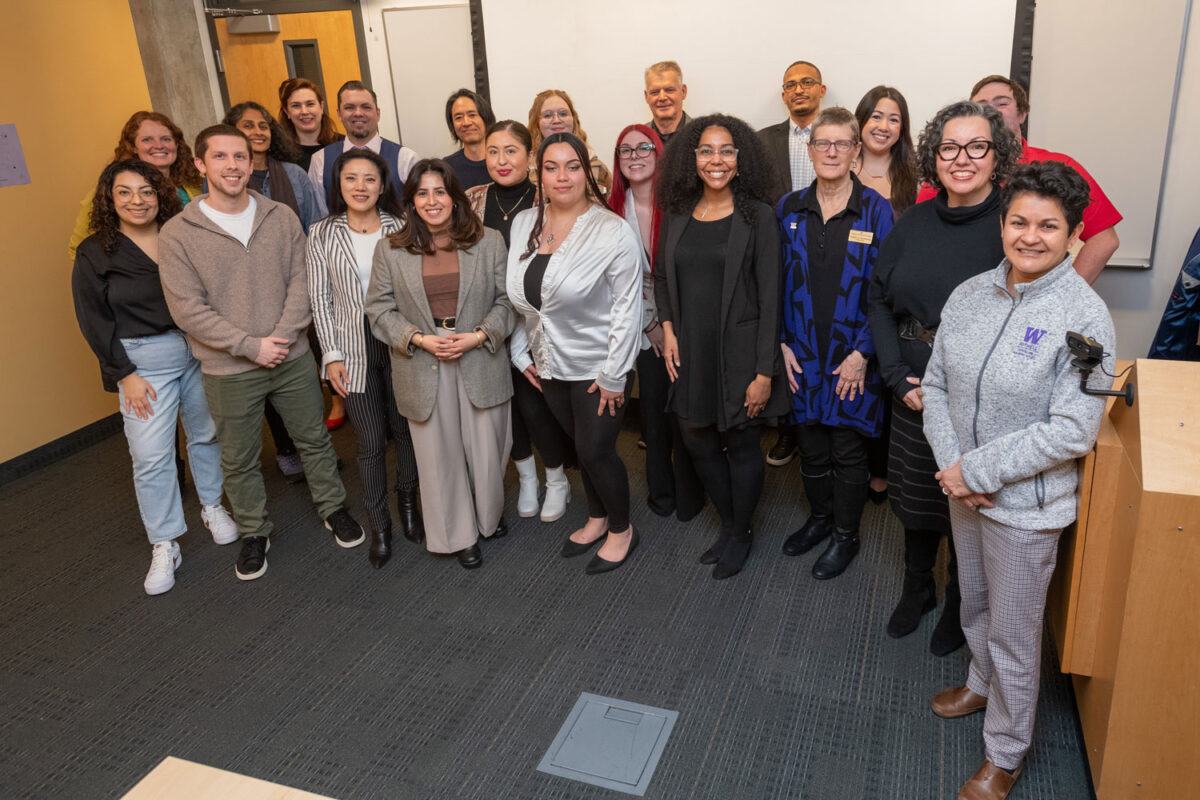The International Symposium on Academic Makerspaces is the preeminent annual meeting for the academic makerspace community to share knowledge, experiences and inspiration to maximize impacts on student learning and alumni success. Each fall, it brings together more than 350 students, faculty, staff and industry leaders — including this year two students from the University of Washington Bothell.
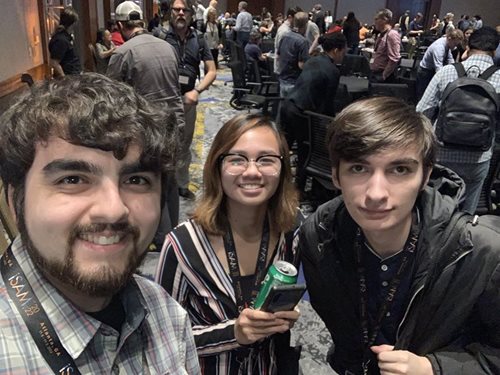
Samantha Brown, a junior interested in Mechanical Engineering, and Drake Monfregola, a sophomore majoring in Mathematical Thinking & Visualization, attended the conference at Georgia Tech in Atlanta last month.
“It was a formal business trip — one that someone like me, at my age, doesn’t normally have a chance to be part of,” said Monfregola.
As students, they broadened their perspectives on careers they could explore after graduation. As employees in UW Bothell’s Collaboratory, they learned ways to enhance the overall experience of those using the space for class projects and research.
“It was a once-in-a-lifetime opportunity,” said Brown.
Improving the space
Brown and Monfregola — along with Jesus Govela, Collaboratory manager and 2019 alumnus in Applied Computing — had the opportunity to tour six of Georgia Tech’s many makerspaces. They learned how each was unique in terms of size, equipment, operation and community served. They also ended each day with “pages of notes” of potential enhancements for the Collaboratory at UW Bothell.
“The 3D printers in one makerspace were all named after fictional characters in pop culture,” Brown said. “I noticed that calling a printer by its name added to the inside jokes and camaraderie among the people using the space.
“A roomful of machines can seem really daunting,” she said, “but that personal touch really made the space more inviting.”
Monfregola agrees. “Even though I was only a visitor, I felt very welcome just walking in and looking around,” he said. “I want our campus community to feel that when they visit the Collaboratory.”
Fostering a community
The Collaboratory team, which includes two additional student employees and four volunteers, has met several times since the symposium to discuss how to integrate a stronger presence of community and elements of fun, creativity and diversity.
By instilling this kind of atmosphere, they believe, more students may take advantage of the many free resources available to them to support their coursework.
The equipment ranges from 3D printers and laser cutters to virtual reality-ready laptops and sewing machines. Machines don’t operate themselves, however, and learning how to use them could make some students, especially non-STEM majors, feel apprehensive.
“The hardest part of the creative process is asking for help,” said Govela. “We all work hard to ensure new visitors are at ease and feel part of our community.”
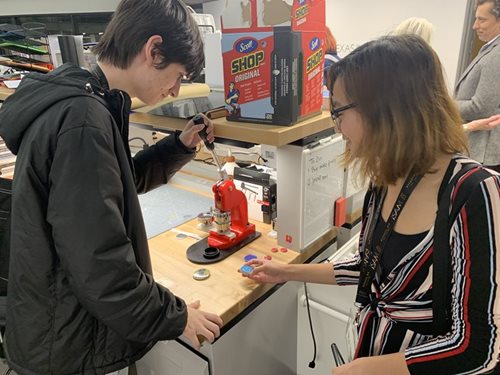
Addressing student needs
Prior to the conference, the Collaboratory team had already been looking at ways to develop a more diverse and inclusive environment, Govela said. Before attending, for example, both Brown and Monfregola read material by some of the presenters and noticed the prevalence of a focus on combatting bias, which was also a key theme in their speeches.
“A lot of them addressed bias and how our biases can affect how we treat people, whether it’s conscious or not,” Brown said. “Gender bias especially limits the potential of makerspaces. This was probably the most significant part that I took away.”
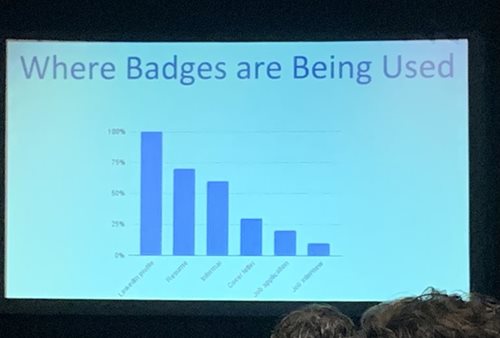
In subsequent meetings, the team has discussed how they present their diversity to the rest of campus. “We have a diverse staff, but it isn’t necessarily obvious to people walking by,” Monfregola said. “We’re working on signage to better convey our diversity as demonstrated by ISAM.”
Brown added that after the symposium, a group chat of people working in academic makerspaces across the world was formed, building a community of support as the individual spaces evolve. “One of the first topics was incorporating digital badging into our work,” she said. “These badges are a form of credentialing that people can earn and show as proof of their experience in a specific topic.
“We already offer several badges in the Collaboratory and will add more as we continue to grow along with others at other universities.”
Validating career choices
As one of his key symposium takeaways, Monfregola pointed to its many networking opportunities. Meeting students from across the country was invaluable, he said, because they exchanged ideas not only during the four days of the event but also once they returned to their respective campuses.
“I’m really looking forward to continuing my learning,” said Monfregola. “The conference opened my eyes to the possibilities for our own space, and being able to bounce ideas off students at other universities will be awesome.”
He also came away with a renewed commitment to work in the business side of STEM after he graduates. “Although I’m a student in the School of Interdisciplinary Arts & Sciences, I really enjoy engineering. I appreciate that I can learn concepts and design through my work at the Collaboratory,” he said. “At the symposium I was exposed to even more opportunities to combine business and STEM, so I know I’m on the right path.”
Brown had similar realizations. “I’m still a pre-major, and I’ve been leaning toward mechanical engineering,” she said. “I talked with many people at the symposium who were in the same or similar major, and not only did they broaden my perspective of what I could do with my degree, they also solidified it.
“Now I’m looking ahead,” she said, “and considering working in the aerospace industry.”
An honor to represent
UW Bothell’s Collaboratory team was also invited to contribute an introductory video that would be shown during the conference, Govela said.
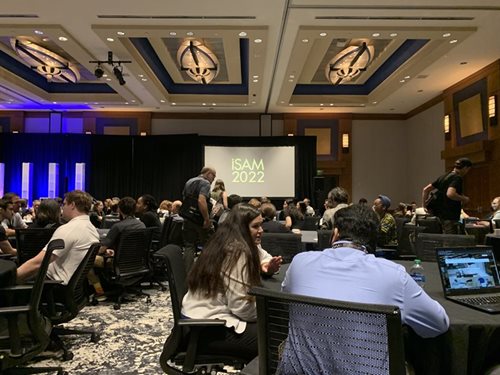
“Just that process alone was a learning experience for the students. Being able to clearly articulate what the space is, what we offer and what it means for our community took some thought and planning,” he said.
Added Monfregola, “Knowing our work would be shown to an international audience was inspiring. We were all very excited and honored to represent UW Bothell. Having that experience and responsibility as a sophomore has been incredible.”


